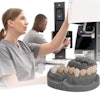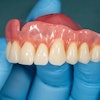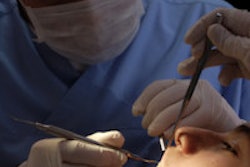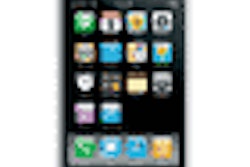
Near-infrared (NIR) transillumination can aid in the early detection and diagnosis of approximal caries and improve routine monitoring of enamel lesions during preventive interventions, according to a new study in Dentomaxillofacial Radiology (October 2011, Vol. 40:7, pp. 429-433).
When compared with bitewing radiography, NIR transillumination demonstrated very good sensitivity and specificity, noted the study authors, from the Federal University of Pernambuco in Brazil and Karolinska Institute in Sweden.
"Bitewing radiography for the detection of approximal caries in dentine has high specificity ... but the sensitivity ... is highly dependent on the extent of caries damage to the dentine," they wrote. "For approximal enamel caries, the sensitivity is low and the lesion size and depth is often underestimated or can even be undetected radiographically."
NIR transillumination, on the other hand, is nondestructive, uses nonionizing radiation, and has been shown to be more sensitive to early demineralization than dental radiography, they added (Community Dentistry and Oral Epidemiology, August 2005, Vol. 33:4, pp. 265-273). And in the first in vivo study involving 1310-nm images of approximal contact surfaces, NIR imaging showed "great potential" as a safe, noninvasive screening tool for detecting approximal lesions (Lasers in Surgery and Medicine, April 2010, Vol. 42:4, pp. 292-298).
NIR images show high contrast between healthy and demineralized areas, and demineralization is easily differentiated from stains, pigmentation, and hypomineralization, according to Daniel Fried, PhD, a researcher in the department of preventive and restorative dental sciences at the University of California, San Francisco who has conducted numerous studies involving NIR imaging, including the 2010 Lasers in Surgery and Medicine study.
For the Dentomaxillofacial Radiology study, the research team collected 14 premolar and molar teeth with early natural caries from the human teeth bank at the Federal University of Pernambuco. The teeth were trimmed, then thinned to one of 14 thicknesses and cut transversely so that the mesial and distal surface of each tooth could be studied.
A transillumination system was built in the Optoelectronics and Photonics Laboratory at the university; the system featured a 5-mW super luminescent diode as the light source and a fiber-optic delivery system, plus infrared polarizers and a CCD camera.
The images were acquired from both approximal sides of the tooth sections using uniform illumination positioned perpendicular to the section, and the same procedure was performed for the analog bitewings. All NIR images and radiographs were evaluated by two radiology specialists using qualitative criteria to determine the presence of caries.
"The results from this study showed better interexaminer reliability when evaluating NIR transillumination images compared with dental radiographs for the detection of early enamel caries," the study authors wrote. "The specificity was good, without false-positive answers, even though the observers had no previous experience in analyzing images captured with the transillumination technique."
The results showed better performance for the NIR method with a sensitivity value of 0.88 and a specificity of 0.72, which means the presence of disease is "greatly detected," while evaluation based on the radiographs showed "unacceptable sensitivity and specificity," they added.
The researchers also demonstrated that the NIR method was clinically feasible in resolving caries lesions through 5 mm of enamel in the interproximal areas, they noted.
"A clearly demarcated boundary between the lesion and the surrounding healthy enamel was shown with high contrast when illuminated with NIR light, instead of the poor contrast radiographically obtained from the same samples," the researchers wrote.
The NIR method tested in this study also has some practical implications with regard to developing a clinically useful device -- it uses a range of wavelengths in which low-cost light sources are available, and the transmitted image can be detected by an ordinary CCD camera, "similar to the one in mobile phones," the researchers noted.



















